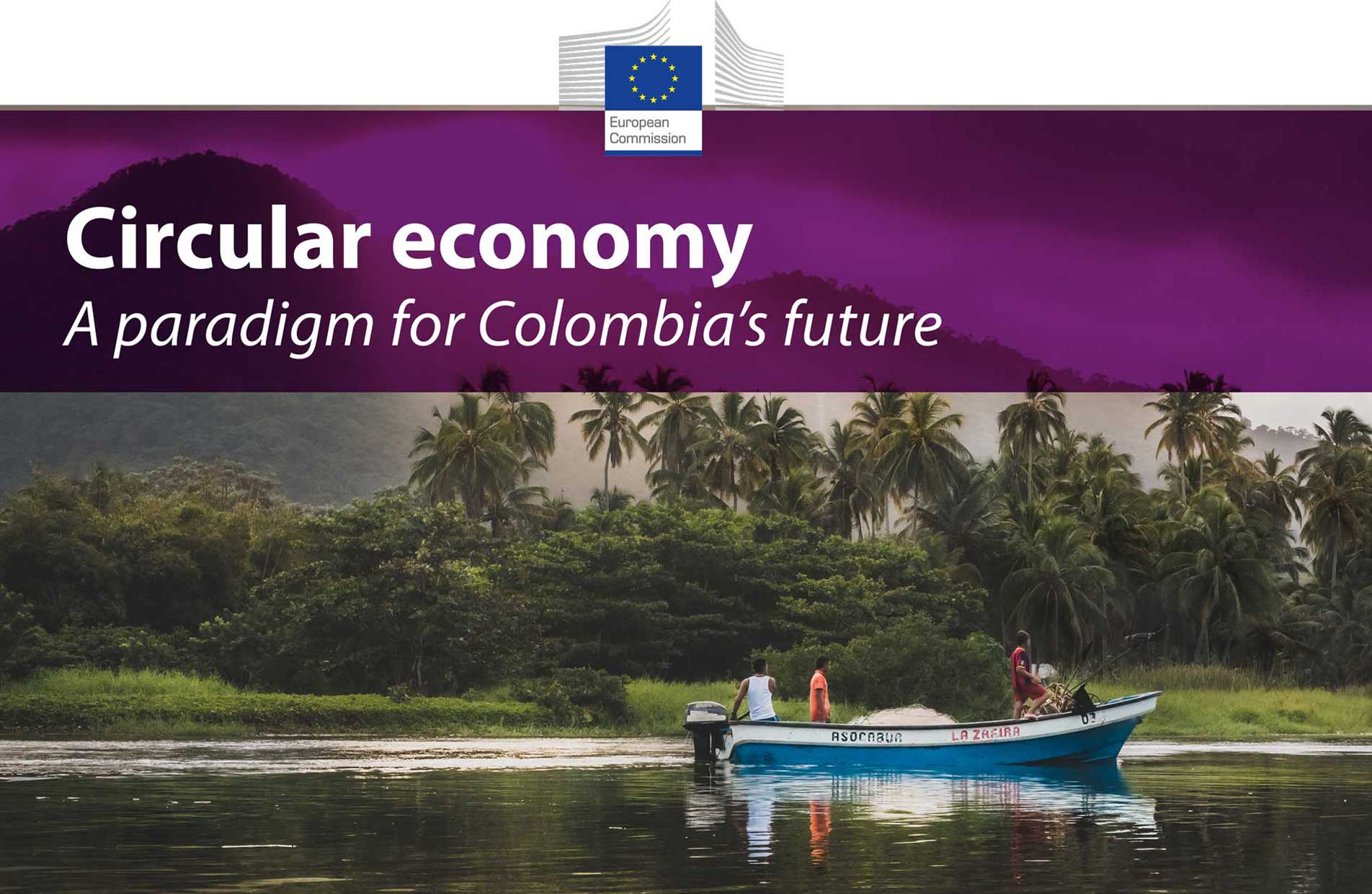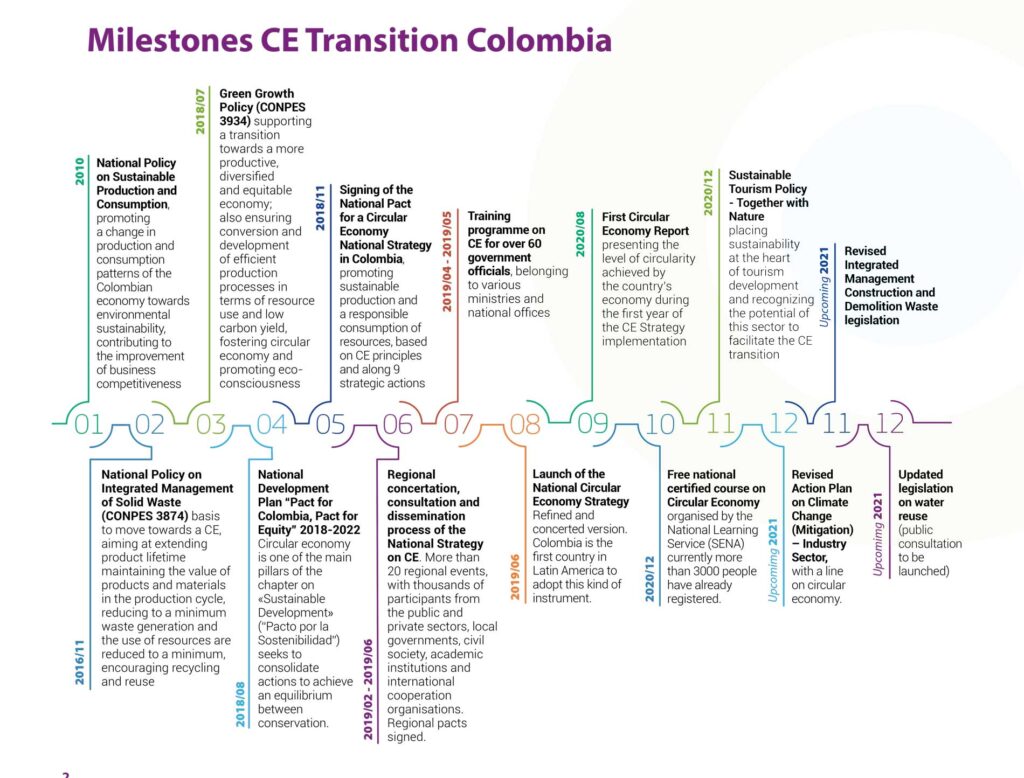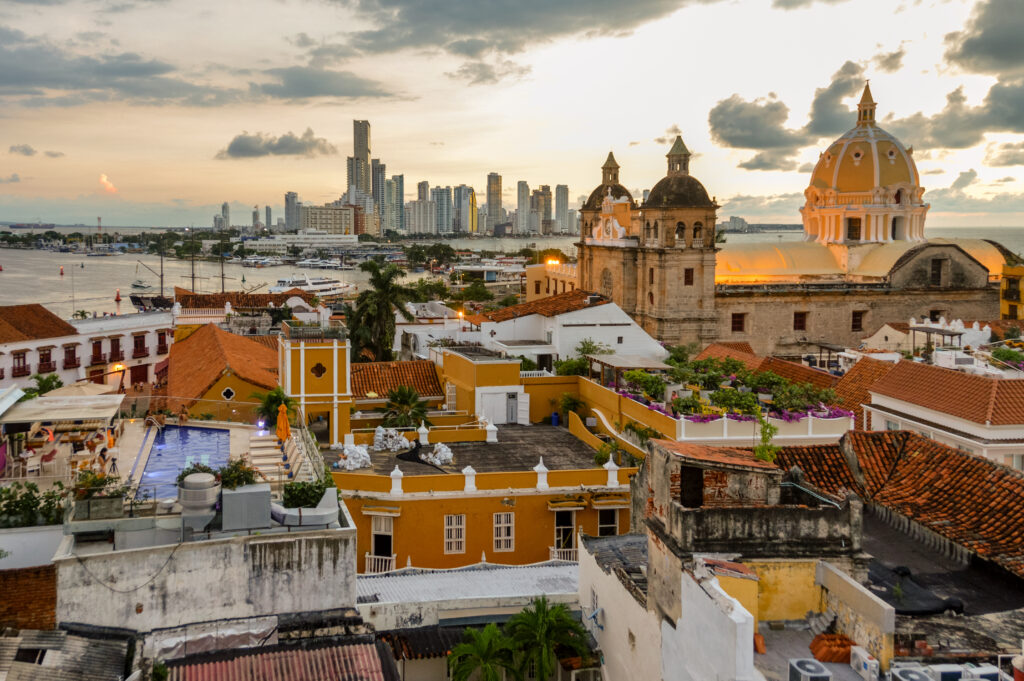In 2019, Colombia was the first country in Latin America to adopt a National Circular Economy Strategy. The strategy prioritises action in six material/resource flows: packaging, building, industrial materials, mass consumption products, as well as natural resources and energy. In alignment with the Colombian Green Growth Policy and roadmap for 2030 and the 2018-2022 National Development Plan (NDP) “Pact for Colombia, Pact for Equity” (2018), it fosters a circular economy model based on durability, reusability, reparability and recyclability. Important factors in the circular shift include political direction (a clear vision), continuity in governance priorities, and commitment among stakeholders, signatories of a National Pact (and further Regional Pacts) for the Circular Economy
Moreover, the Government actively encouraged knowledge sharing as a means to enable the transition, including by conducting a training programme on the CE for over 60 government officials of various ministries and national offices. Taking stock of implementation progress has also helped build the case for the CE, with a relevant report published one year after the launch of the CEAP. Lastly, CE approaches have been integrated in relevant policy processes, including in Sustainable Tourism, Climate Change (Mitigation) – Industry Sector, Construction and Demolition Waste, and Water Reuse.



